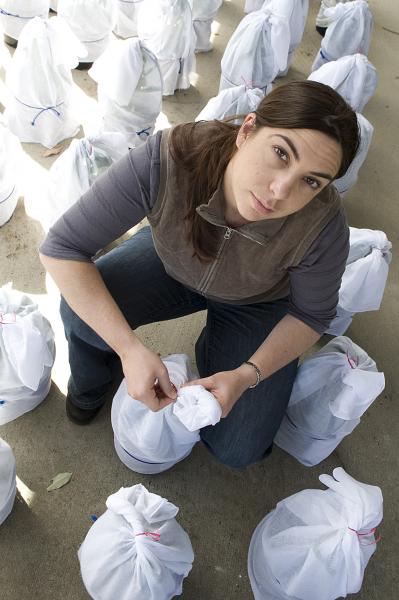pesticide
Shifting focus from the population to the individual as a way forward in understanding, predicting and managing the complexities of evolution of resistance to pesticides
| Publication Type | Journal Article | |
| Year of Publication | 2012 | |
| Authors | Renton, M. | |
| Journal Title | Pest Management Science |
Modelling the kinetics of ethyl formate sorption by wheat using batch experiments
| Publication Type | Journal Article | |
| Year of Publication | 2009 | |
| Authors | Darby, J.A; Willis, T.; Damcevski, K. | |
| Journal Title | Pest Management Science | |
| Pages | 982-990(9) | |
| Publisher | John Wiley & Sons | |
| DOI | DOI 10.1002/ps.1783 |
This project aims to develop mathematical models to investigate the emergence of resistance to fumigants, particularly phosphine based fumigants. A particularly important aspect is the possibility that resistance is directly influenced due to the migration of resistant stored grain insects from silos to and from surrounding farmland, where they breed with non-resistant insects. Computer software will be developed to assess different fumigation strategies with the aim to reduce (or eliminate) resistance, taking into account ecological data on movement of insects to surrounding farmland.
What is the biosecurity problem?
Phosphine is the most common fumigant used today to treat stored grain infestations. Resistance to phosphine is a major threat to the grain industry and inadequate fumigation strategies may result in infestations of resistant insects that are difficult to control. Grain borers tend to reach unnaturally high population numbers due to mass storage of grain food. There is a need to understand the impact of refuges on the emergence of resistance.
The main outputs of this project are to:
- understand the impact of refuges on the emergence of resistance
- develop a management tool for farmers to allow more effective management strategies to be applied
- develop much needed skills in mathematical model development in the grains industries, and
- limit the risk of resistant strains of stored grain insects becoming endemic to the Australian grain industry.
Who will be the end-users of your research?
Grain handling companies and farmers will have a fumigation management tool (as computer software) that will help them decide the most effective fumigation management strategies.
STUDENT

Mr Jason Thorne
Student CRC60129: Mathematical modelling of fumigant resistance - PhD
j1.thorne@student.qut.edu.au
Read More
PROJECT DETAILS
Complete
Supervisor
Dr Glenn Fulford (QUT), Dr Ian Turner (QUT), Dr Andrew Ridley (QPI&F) and Dr David Schipallus (QPI&F)
Supervising Institution
Queensland University of Technology
Term
June 2009 - June 2012
LOCATION
This project will assess the toxicity of reduced risk insecticides against a range of commercially available biocontrol agents for use in integrated pest management programs by the horticultural industry.
What is the biosecurity problem?
If exotic pests become established in Australia, it may be possible to initially base IPM on biocontrol agents available in Australia.
The outputs of this reasearch are to:
- assess new reduced risk insecticides which are being produced for the Horticulture Industry for the control of Lepidoptera, Coleoptera, Diptera, and Aphids. For example, the insecticide Spirotetramat is proposed for control of aphids, cicadas, grape louse, whitefly, cottony cushion scale and mealy bug in a range of horticultural crops. Whilst the efficacy of these pesticides is being evaluated against existing pests, not much is known of their potential impact (direct and indirect) on biocontrol agents, and
- identify and monitor existing naturally occurring biocontrol agents (sticky traps, plant samples) to obtain information on their phenology, spatial distribution and abundance in two horticultural crops.
Who will be the end-users of this research?
- The horticultural industry.

Jessica Harrison doing trials in the field.
STUDENT

Jessica Harrison
Student CRC60122: Assessment of the toxicity of reduced risk insecticides (Hons)
Read More
PROJECT DETAILS
Complete
Supervisor
Dr Sonya Broughton (DAFWA), Prof Jonathan Majer (Curtin University)
Supervising Institution
Curtin University
Term
January 2008 - November 2008

